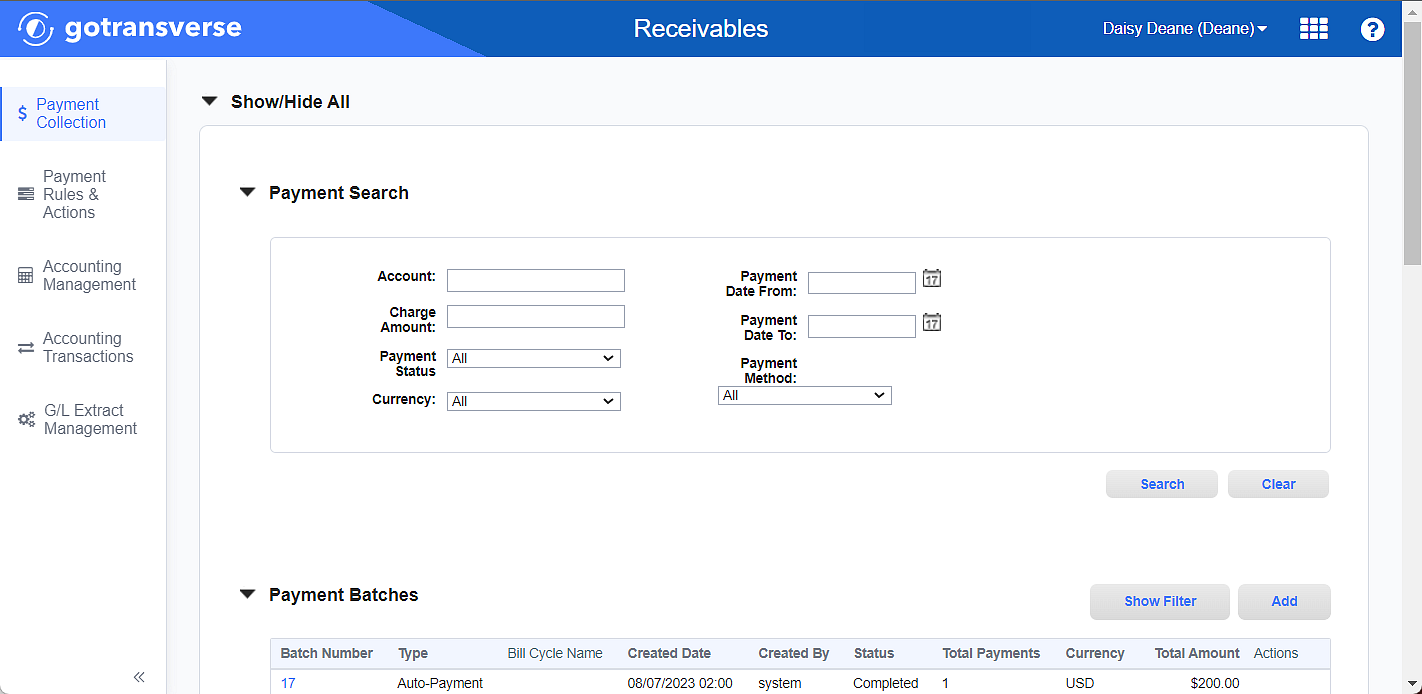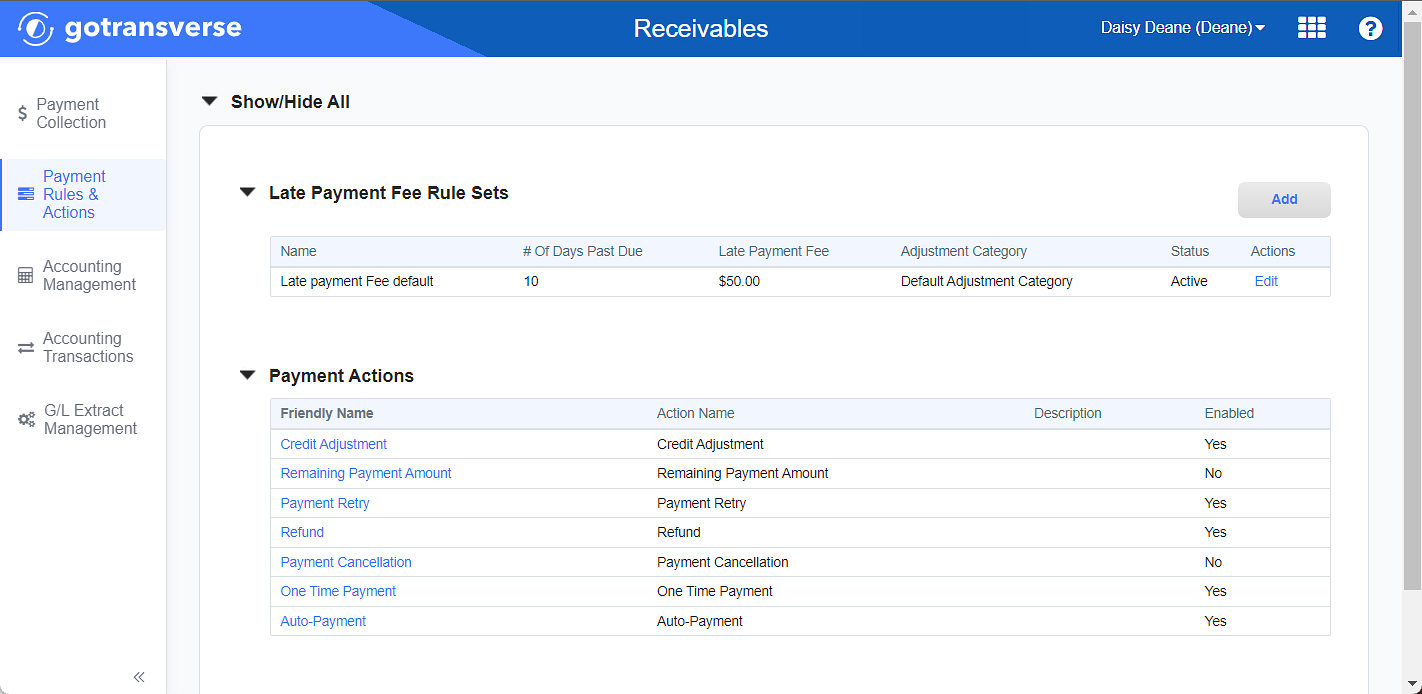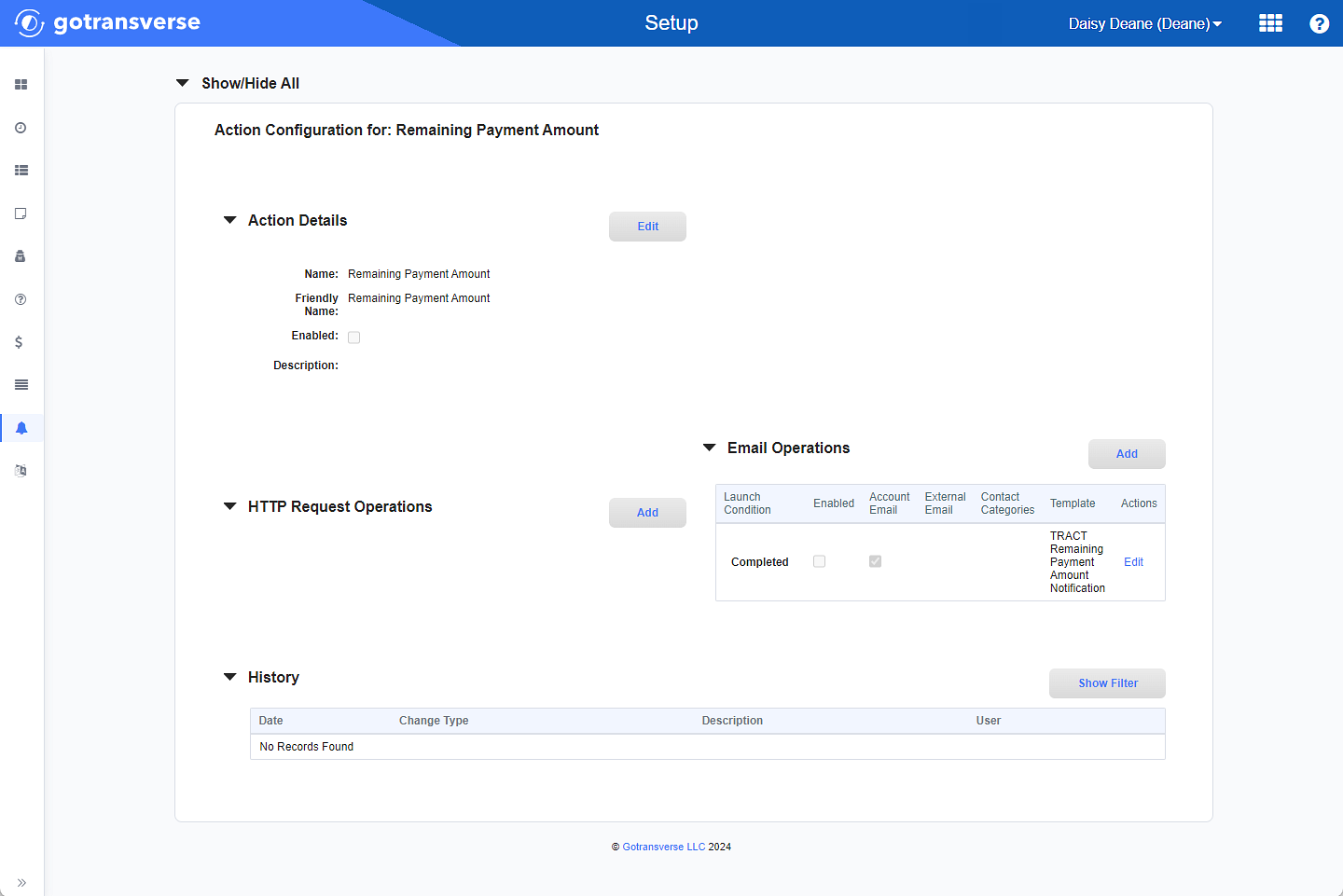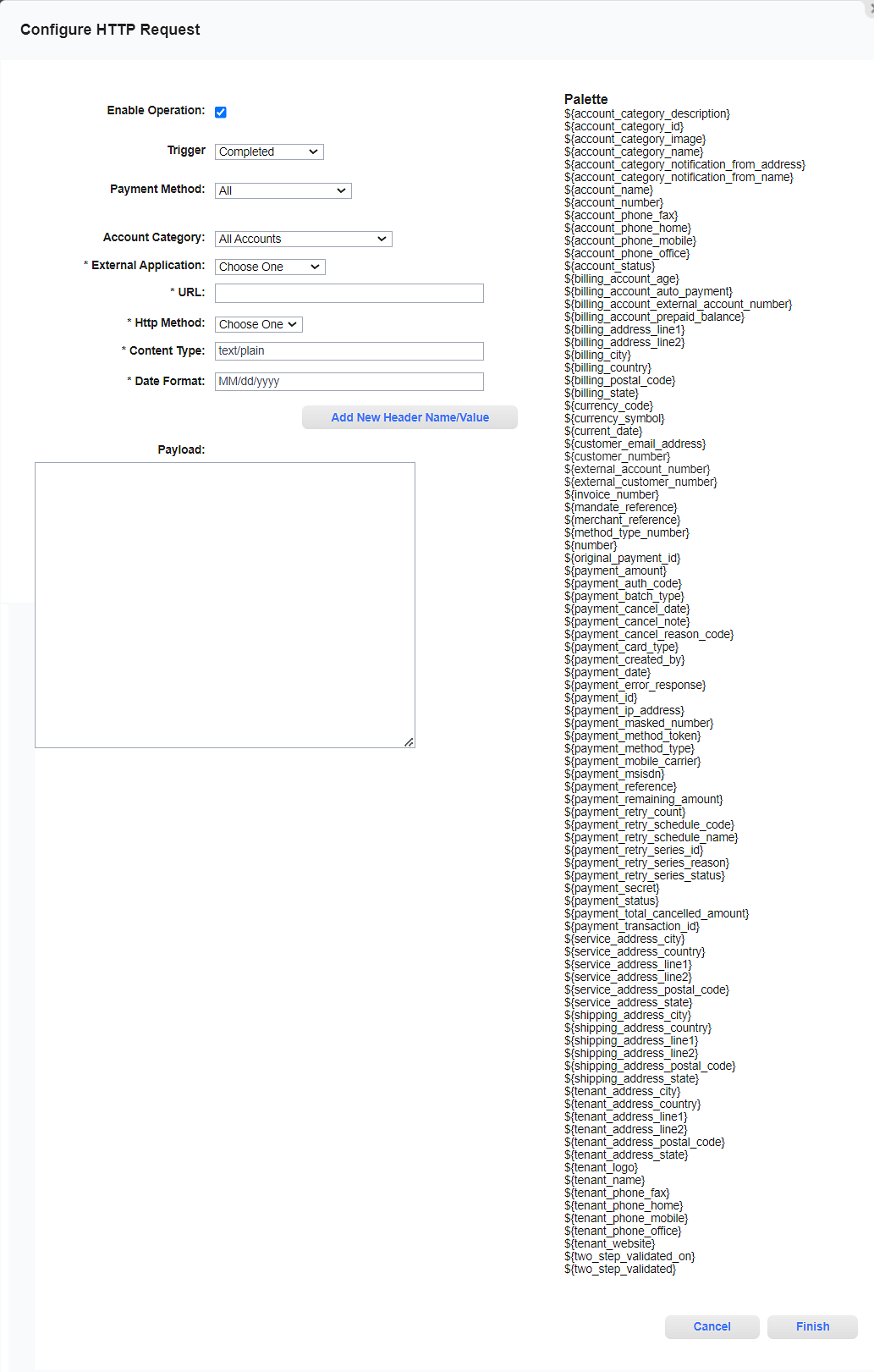Add or Edit HTTP Action for a Payment Action
HTTP request operations are managed in the Setup application’s Notification Management Module. Refer to Configure HTTP Request Operation for Payment Notifications for more information about notifications.
Complete the following steps to add or edit an HTTP action:
-
Select Receivables from the Gotransverse application menu
 .
. 
Payment Collection Window
-
Click Payment Rules & Actions in the left pane.

Payment Rules & Actions Window
Click the
 icon in the left pane to hide it. Click the
icon in the left pane to hide it. Click the  icon to open it.
icon to open it. -
In the Payment Actions section, click the name of the payment action you want to configure to open the Action Configuration window.
-
On the Action Configuration window, in the HTTP Request Operations section, click the Add button to add a new email operations, or click Edit in the Actions column for an operation to edit the operation. Both actions will open the Configure Email window.

Action Configuration Window
-
On the Configure HTTP Request window, enter the required and relevant information:
The fields in the configuration window are based on the type of Payment notification. The example shown is an example of a Configure HTTP Request window for Payment Retry.

Configure HTTP Request Window
Required fields are marked with an asterisk.
-
Enable Operation checkbox — Indicates whether the operation is on and available for use. Select or deselect the checkbox to enable or disable this action as follows:
-
Selected: The request will occur.
-
Not selected: The request will not occur. This request can be enabled later. Any request operation can be enabled at any time after they are created.
-
-
Trigger — For Payment Retry, One Time Payment, Refund, and Auto-Payment. The type of call this action makes. Select an option from the drop-down list: POST, GET, or DELETE.
-
Payment Method — For Remaining Payment Amount, Payment Retry, Payment Cancellation, One Time Payment, Refund, and Auto-Payment. Select a payment method from the drop-down list. Payment methods that have been configured for you tenant will display in the list. Payment methods are managed in the Admin application’s Integration module (refer to Payment Gateways).
-
Adjustment Reason — For Credit Adjustment. Select a Reason for the adjustment. Reasons are created and managed in the Setup application. Refer to Reasons Module for more information.
-
External Application* — Select an HTTP external application that you configured in External Applications.
-
URL* — Enter the URL of the website to access. Access to an external website is configured in the External Applications module.
-
Http Method* — The type of call this action makes. Select an option from the drop-down list: POST, GET, or DELETE.
-
Content Type* — Change the provided content type if needed.
-
Date Format* — Change the provided format if needed. Default is MM/dd/yyyy, which displays the date as 09/24/2023.
-
Add New Header Name/Value — Click this button to display two additional fields, which can be used to add extra content to the header.
If you have added too many Name/Value fields, you can click the Remove Last Header Name/Value button to remove the last set of Name and Value fields.
-
Name*: The header’s name.
-
Value*: The value to be included in the header.
-
-
Payload: Select items from the Palette on the right to add to the Payload text box.
You can highlight a palette item and then drag it to the Payload text box.
-
-
Click Finish. The Configure HTTP Request window closes.
Topic updated: 04/2024.